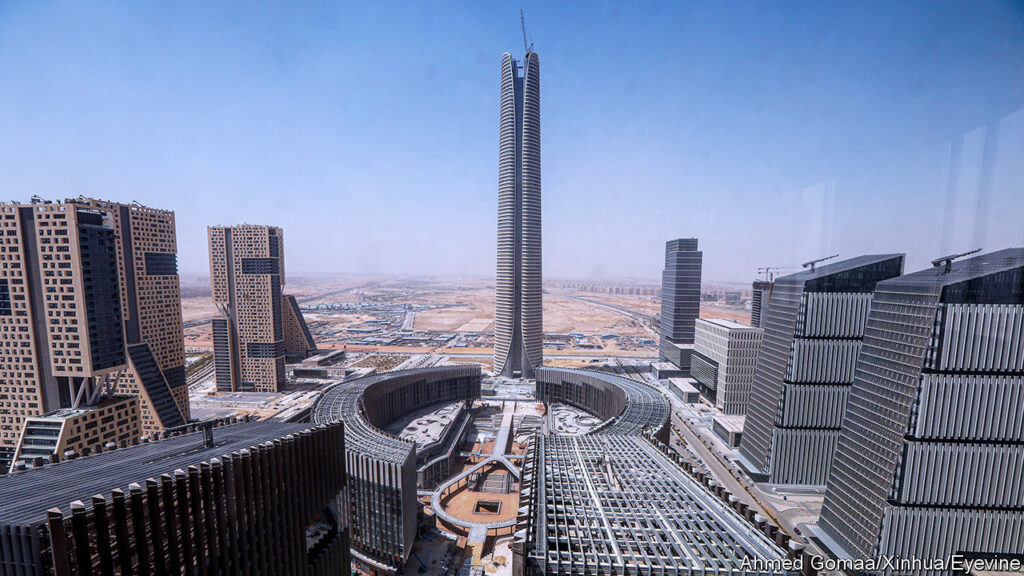Africa’s tallest building, the Iconic Tower, is currently under construction in the New Administrative Capital in northern Egypt. This city is expected to one day house 6.5 million people, but for now, it remains mostly empty, much like the desert that once occupied the land. The development of this new city is part of a larger trend of city-building across the globe, with firms and governments announcing and beginning construction on numerous new settlements in recent years.
The New Administrative Capital is just one of many new cities being built in Egypt. In addition to this project, Egypt is constructing five other cities and has plans for dozens more in the future. Similarly, India is considering the development of eight new urban hubs, while outside Baghdad, Iraq, workers have recently begun work on the first of five planned settlements. This surge in city-building represents the largest scale of such development seen since World War II.
The reasons behind this trend of city-building are varied. In some cases, these new cities are being developed as a means of decongesting overcrowded urban centers. In others, they are being built to serve as hubs for specific industries or economic activities. Additionally, some cities are being planned as ways to address social or environmental concerns, such as providing affordable housing or reducing pollution.
However, the success of these new cities is far from guaranteed. Many city-building projects have faced significant challenges, from funding shortages to political instability. In some cases, the planned cities have failed to attract the expected number of residents, leading to empty streets and underutilized infrastructure. Additionally, there are concerns about the environmental impact of these developments, as they often require the destruction of natural habitats and resources.
Despite these challenges, the trend of city-building shows no signs of slowing down. Governments and developers continue to invest in the creation of new urban centers, driven by a variety of economic, social, and political factors. At the same time, critics argue that more attention should be paid to the sustainability and long-term viability of these projects, to ensure that they serve the needs of both current and future generations.
In conclusion, the rise of new cities around the world, such as the New Administrative Capital in Egypt, reflects a broader trend of urban development on a massive scale. While these projects hold promise for addressing a range of social, economic, and environmental issues, they also present significant challenges that must be carefully managed. As the world continues to urbanize and grow, the development of new cities will play a crucial role in shaping the future of our societies.












